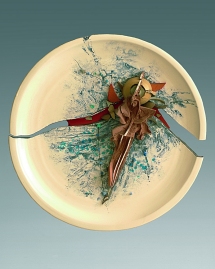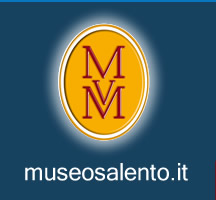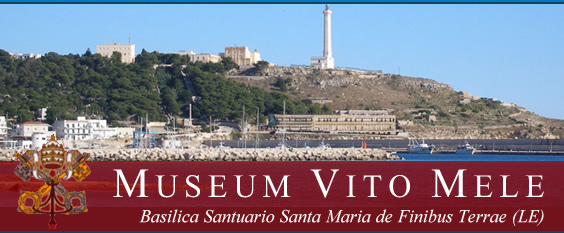|
|
| |
|
|
| |
Artisti / Artists : Museum Vito
Mele |
|
|
| |
 |
Auro Salvaneschi |
|
|
|
Pittore e ceramista, nasce a Pinerolo Po ( Pavia)
il 14 novembre del 1936. Segue gli studi secondari
a Pesaro e si iscrive al Magistero fiorentino.
Dopo il conseguimento del diploma compie varie
esperienze presso botteghe di ceramisti, tra cui
quella prestigiosa di Baratti a Pesaro. Non estraneo
ai fermenti culturali ed artistici nazionali segue
i dibattiti sulle tecniche per la lavorazione
della terre cotte a Venezia e a Milano insieme
a Tancredi e Valentini, grandi interpreti dell’arte
della ceramica. Alla fine degli anni ’50
si trasferisce a Lecce, chiamato per insegnare
Arte della Ceramica nell’Istituto Statale
D’Arte “G. Pellegrino” di Lecce
che in quegli anni riuniva gli artisti salentini
più impegnati. Ancora oggi guida come dirigente
scolastico quest’istituto portando la sua
esperienza e il suo valido contributo. La tecnica
della ceramica si perde nella notte dei tempi;
è una tecnica antica che agli albori nasce
per legarsi ad una funzione. Apparentemente semplice,
è estremamente complessa per chi utilizzando
la materia, con le sue potenzialità fisiche
e cromatiche, vuole costruirsi un linguaggio.
Auro Salvaneschi ha catturato e percepito i segreti
della materia e solo così è riuscito
ad estrarre, ad enucleare, a modellare morfologie
scultoree, pittoriche e decorative insieme. Sempre
ipercritico ed insoddisfatto crea opere utilizzando
tecniche antiche e sperimentandone nuove: è
convinto che l’idea diventa immagine solo
se il mestiere è conosciuto e dominato.
Le sue fonti di ispirazione sono la Natura e la
Storia: la prima è per lui la vita, sempre
uguale e pur tanto diversa, è “nourriture
terrestre”nel senso panteistico e gidiano
del termine; la Storia è la guida ma non
tutti ne percepiscono gli insegnamenti e gli errori
epocali portano distruzione e morte. Nell’ultimo
periodo gli avvenimenti dell’11 di settembre
lo hanno molto segnato e nelle sue opere se ne
rilevano le tracce: in queste strutture la linea
è più incisiva, è una ferita
difficile da guarire, che può essere solo
lenite col balsamo della memoria. Ha partecipato
a numerose mostre e si è evidenziato soprattutto
nell’arte della ceramica. Sue opere si trovano
nel Museo della Ceramica di Faenza e nei palazzi
salentini. Unanimi sono i consensi della critica
sull’originalità contenutistica e
formale della sua produzione.
|

11
SETTEMBRE UNA FERITA SUL MONDO, 2003
altorilievo in terracotta greificata (tn.
c. 1200°), ø cm. 62
|
|
|
|
| |
|
|
| |
|
 |
Auro Salvaneschi |
|
|
The painter and potter Auro Salvaneschi was
born in Pinerolo Po in 1936. He studied in Pesaro
and then enrolled for a diploma in art education
in Florence. He gained experience in a number
of ceramic workshops, including the presitigious
Baratti atelier in Pesaro. He was not foreign
to the artistic and cultural ferment and followed
the debates on techniques for working terracotta
in Venice and Milan along with Tancredi and Valentini,
celebrated practitioners of the ceramic art. At
the end of the ‘50s he moved to Lecce to
teach ceramics at the Istituto Statale d’Arte
G. Pellegrini which at that time united the most
dedicated Salentine artists. To this day he is
director of studies at the Istituto bringing to
it his experience and valuable
contribution. The origins of pottery techniques,
at the outset functional, are lost in the mists
of time. Though apparently simple, it is extremely
complex for
those who wish to express their own voice using
this material with all its phsyical and chromatic
potential. Auro Salvaneschi has captured and perceived
the secrets of the material and only thus has
he succeeded in extracting and clarifying, moulding
sculptural forms that are both pictorial and decorative.
Ever hypercritical and not easily satisfied, he
creates works using techniques that are both ancient
and experimental. He is convinced that the idea
only becomes an image if the artist knows his
craft and is in control of it. His founts of inspiration
are Nature and History: the first is for him life,
ever the same but nonetheless varying, “earthly
nourishment” in the pantheistic sense of
the term. History is the guide, but not everyone
is aware of the lessons it teaches, and the errors
of an epoch carry with them death and destruction.
He was deeply affected by the events of 11th September
and his work bears the signs, its line more incisive
like a wound that is difficult to heal and that
can only be eased by the balm of time. He has
taken part in many exhibitions and his works can
be found in the Museo della Ceramica, Florence,
and in Palazzi in the Salento. Critics are unanimous
about the originality of the form and content
of his works.
.
|
|
|
|
|
|
 |





